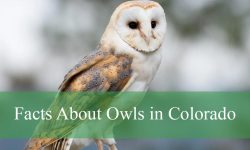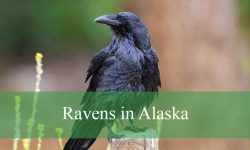Lizards are fascinating reptiles found throughout South Carolina’s varied landscapes. From dense forests to coastal plains, these reptiles contribute to local ecosystems and add charm to outdoor spaces.
South Carolina is home to diverse lizard species, including vibrant anoles, smooth skinks, and elusive glass lizards. Each species has unique features and behaviors that make them special to observe.
This article presents 20 lizard species commonly spotted in South Carolina. With clear photos and identification tips, you can confidently recognize these reptiles in their natural habitats.
Common Lizards Found in South Carolina
Eastern Green Anole (Anolis carolinensis)
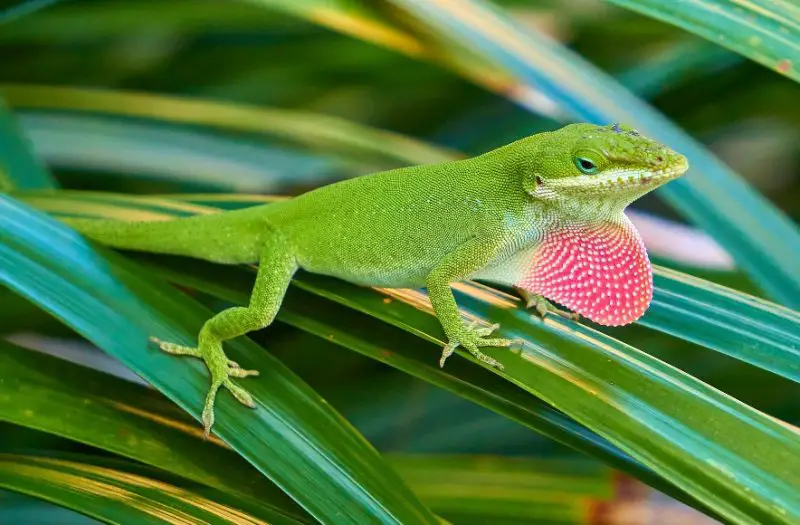
The Eastern Green Anole is a slender, arboreal lizard well-known for its bright green coloration, which can shift to brown depending on its mood, temperature, or surroundings. It has a pointed snout, long tail, and specialized toe pads that allow it to climb smooth surfaces with ease. Males exhibit a prominent pink or reddish throat fan called a dewlap, used in territorial displays and courtship.
Adult Eastern Green Anoles typically range from 5 to 8 inches in total length, with males usually larger than females. Their slim, agile bodies enable them to move quickly through trees and shrubs. They are primarily diurnal and spend much of their time basking in the sun to regulate their body temperature.
Behaviorally, these lizards are territorial and display push-ups, head-bobbing, and dewlap extensions to communicate with rivals or attract mates. They are mostly solitary except during mating season. Their ability to change color aids in camouflage and thermoregulation.
In South Carolina, Eastern Green Anoles inhabit forests, suburban gardens, parks, and urban areas. They prefer warm, humid environments and hunt insects such as flies, crickets, moths, and spiders found on foliage and nearby structures.
Brown Anole (Anolis sagrei)
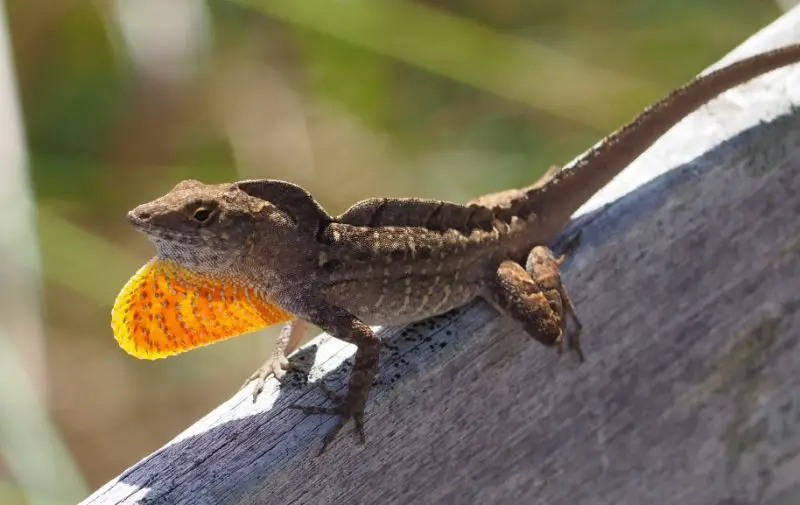
The Brown Anole is a stout-bodied lizard recognized for its brown or grayish coloration with darker patterns or blotches, providing excellent camouflage against leaf litter and tree bark. Unlike the green anole, the Brown Anole rarely changes color. Males display a vibrant reddish-orange dewlap with white spots, used for communication and territorial defense.
This species grows to about 5 to 7 inches long, including the tail. Brown Anoles have muscular bodies with a somewhat blunt snout and strong legs. They can autotomize (drop) their tails to escape predators and regenerate them later.
Brown Anoles are highly territorial and aggressive, often displacing native green anoles where their ranges overlap. They are diurnal, quick ground-dwellers, but can climb vegetation. Their behavior includes territorial push-ups, chasing rivals, and displaying their dewlap.
In South Carolina, Brown Anoles thrive in gardens, forest edges, and urban environments. They feed mainly on small insects like ants, beetles, and spiders, demonstrating adaptability to diverse habitats.
Eastern Fence Lizard (Sceloporus undulatus)
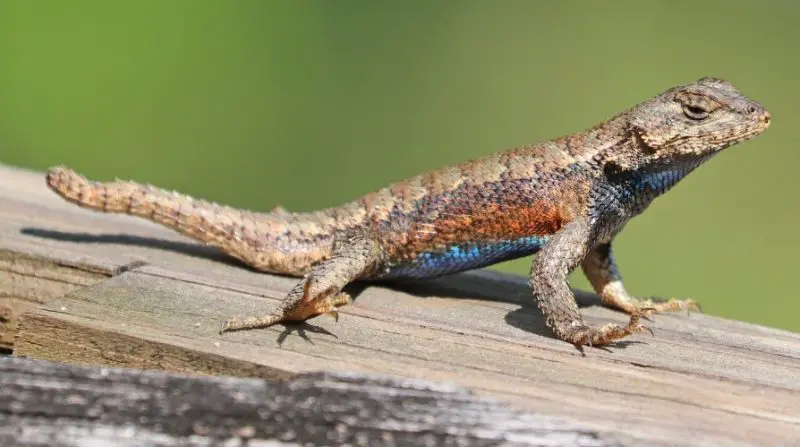
The Eastern Fence Lizard is easily identified by its rough, spiny scales and grayish or brown body marked with darker blotches and bands. Males feature striking blue patches on their throats and bellies, especially during breeding season, which are used in courtship and territorial displays.
Adults measure approximately 5 to 7.5 inches in total length. Their stout, flattened bodies and strong limbs allow them to climb fences, tree trunks, and rocky surfaces efficiently. They are primarily terrestrial but often climb to bask in sunny spots.
Behaviorally, Eastern Fence Lizards are territorial and use head-bobbing, push-ups, and displaying blue belly patches to warn rivals and attract mates. They are diurnal and feed mainly on ants, beetles, spiders, and other small arthropods.
In South Carolina, they are found in open woodlands, forest edges, rocky outcrops, and along fences—favoring dry, sunny habitats with ample cover. Their presence indicates healthy ecosystems with abundant insect prey.
Florida Scrub Lizard (Sceloporus woodi)
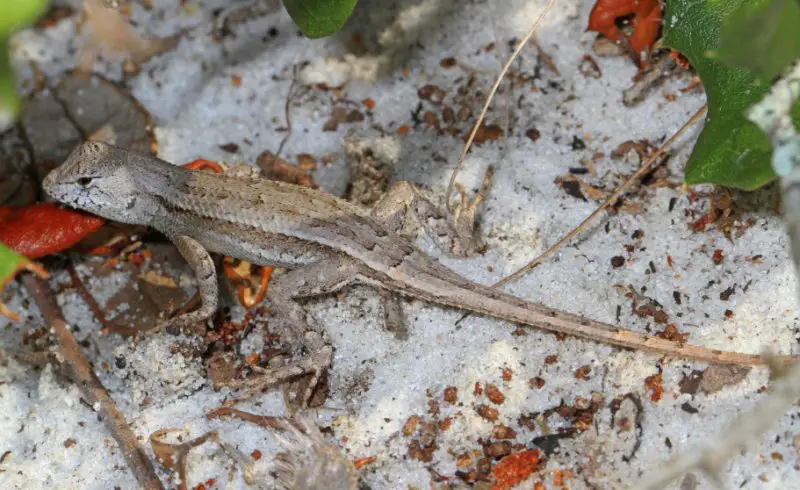
The Florida Scrub Lizard is a medium-sized lizard with rough, keeled scales and a gray or brown base color featuring dark crossbands along its back. Males exhibit vivid blue patches on their bellies and throats during breeding season, which are used in social signaling.
Adults grow to about 6 to 8 inches long. Their somewhat flattened bodies and strong limbs facilitate movement through scrub vegetation and sandy soils typical of their preferred habitat.
Behaviorally, Florida Scrub Lizards are territorial and display push-ups and head-bobbing to communicate. They are active during the day and bask regularly to maintain body temperature. Their diet consists mainly of insects and other small arthropods.
While primarily native to Florida, in South Carolina they are limited to sandy scrub and pine barren habitats with sparse vegetation, where they rely on warm conditions and abundant prey for survival.
Broad-headed Skink (Plestiodon laticeps)
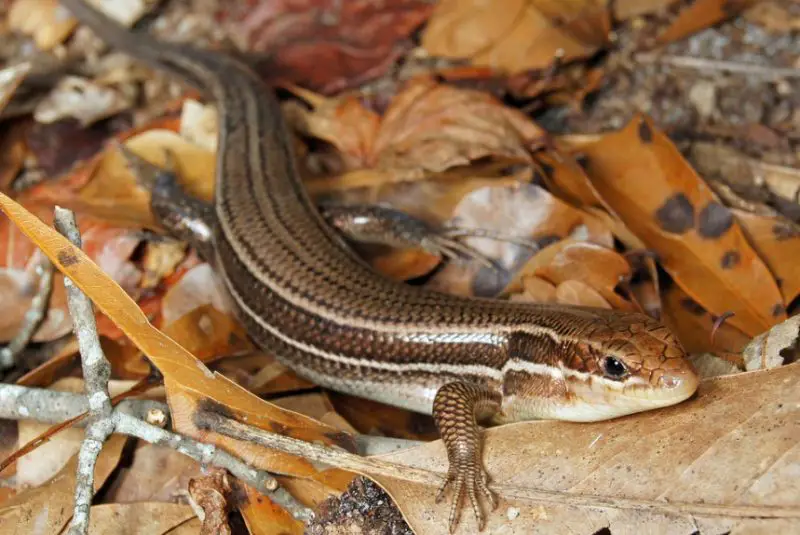
The Broad-headed Skink is one of the largest skink species in the southeastern U.S., recognizable by its broad, triangular head and smooth, shiny scales. During breeding season, males display bright orange or red heads, contrasting with their brown or olive bodies marked by lighter stripes along the sides.
Adults can reach lengths of 12 to 14 inches, including a long tail that aids balance and rapid movement. Their muscular bodies and strong limbs allow them to climb trees as well as navigate ground cover.
Behaviorally, Broad-headed Skinks are both arboreal and terrestrial, often found basking in sunlight or foraging for prey. Males are territorial and engage in aggressive displays during mating season. Their diet includes insects, spiders, small amphibians, and occasionally smaller lizards.
In South Carolina, they inhabit mature forests, woodlands, and areas rich in leaf litter and woody debris, using hollow logs and tree cavities for shelter and nesting.
Southeastern Five-lined Skink (Plestiodon inexpectatus)
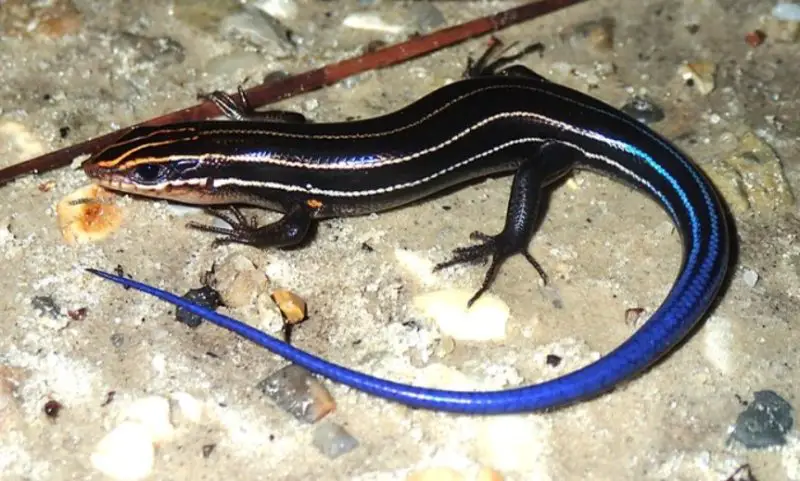
The Southeastern Five-lined Skink is a medium-sized lizard distinguished by five bright, cream-colored stripes running along its dark brown or black body. Juveniles display vivid blue tails which fade with age, and adult males develop reddish-orange coloring on their heads during the breeding season. Their smooth, shiny scales provide a glossy appearance.
Adults typically measure 6 to 8 inches in total length, including the tail. They have slender, streamlined bodies and long tails that can detach to escape predators, a defense mechanism known as autotomy. Their size and agility help them navigate leaf litter and forest floors efficiently.
Behaviorally, Southeastern Five-lined Skinks are diurnal and mostly terrestrial but will climb low shrubs when necessary. They are territorial during mating seasons, using push-ups and head-bobbing as visual communication to deter rivals or attract mates. These lizards bask frequently to regulate body temperature.
In South Carolina, this species prefers moist woodlands, forest edges, and areas rich in leaf litter and fallen logs. Their diet consists mainly of insects, spiders, and other small arthropods, playing an important role in controlling pest populations.
Common Five-lined Skink (Plestiodon fasciatus)

The Common Five-lined Skink resembles the Southeastern Five-lined Skink but has subtle differences in scale pattern and geographic distribution. It exhibits five distinct pale stripes against a darker background, with juveniles boasting bright blue tails that dull as they mature.
Adults grow to approximately 5 to 7 inches long. Their sleek, shiny scales reflect light, enabling them to blend into shaded forest floors. Their long tails aid in balance and serve as a defense mechanism by detaching when threatened.
Active during daylight, Common Five-lined Skinks are primarily terrestrial but occasionally climb low vegetation. Males become territorial during breeding, using push-ups and dewlap displays to intimidate rivals. Their insectivorous diet includes beetles, ants, and caterpillars.
In South Carolina, they inhabit hardwood forests, mixed woodlands, and rocky shaded areas with ample leaf litter, often taking shelter beneath logs and rocks. They favor moist environments where their prey is abundant.
Coal Skink (Plestiodon anthracinus)

The Coal Skink is a smaller skink with a sleek body and smooth scales that range from dark brown to black with lighter stripes along its sides. Its name comes from the dark “coal-like” coloration of its back. Males may show subtle blue hues during breeding.
Adults typically measure 4 to 6 inches long. Their slender bodies and long tails make them agile movers through leaf litter and rocky crevices. They can autotomize their tails to evade predators and regenerate them later.
Coal Skinks are secretive and prefer moist, shaded habitats near streams, rocky slopes, and forested areas. They are diurnal and feed primarily on insects and small invertebrates, often foraging under debris and loose bark.
In South Carolina, Coal Skinks are found mainly in upland forests and near freshwater sources where humidity is higher. Their presence often indicates healthy, undisturbed habitats.
Ground Skink (Scincella lateralis)
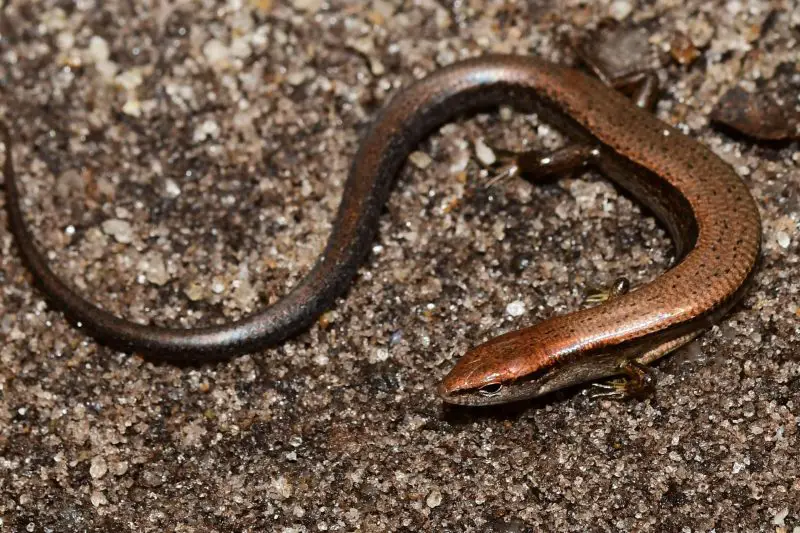
The Ground Skink is a small, slender lizard with smooth, shiny scales and a light brown to tan coloration with subtle stripes or spots running along its body. It is one of the smallest skinks in the region and is often seen scurrying quickly across the forest floor.
Adults reach lengths of 3 to 5 inches, including the tail. Their diminutive size and streamlined bodies allow them to move easily through leaf litter and soil. They have relatively short limbs but are agile and fast.
Behaviorally, Ground Skinks are secretive and spend much of their time hidden beneath leaves and logs. They are diurnal and insectivorous, feeding on small insects like ants, termites, and beetles. They prefer moist environments and are commonly found in shaded forests.
In South Carolina, Ground Skinks inhabit hardwood forests, pine woods, and mixed woodlands. They thrive in moist leaf litter and soil that provides cover from predators and ample food sources.
Eastern Glass Lizard (Ophisaurus ventralis)
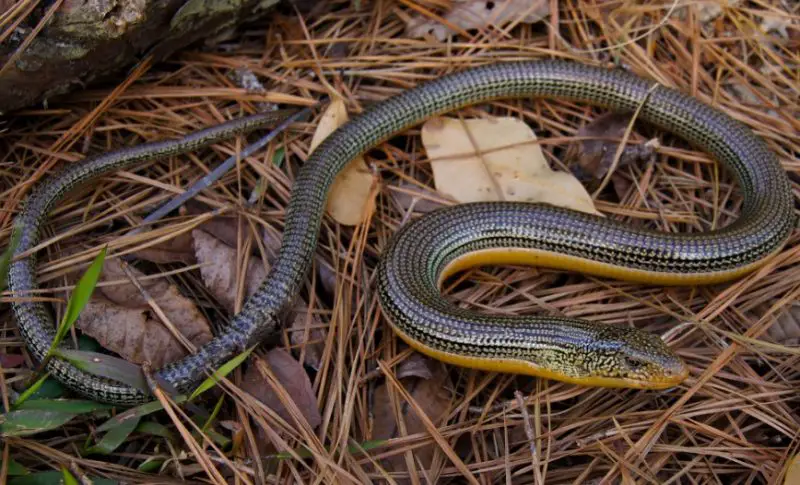
The Eastern Glass Lizard is a legless lizard that closely resembles a snake but can be distinguished by its movable eyelids and external ear openings. It has smooth, shiny scales and a long, slender body that can reach impressive lengths.
Adults typically range from 18 to 30 inches long, with a thin, whip-like tail that can easily break off to escape predators—a trait that gives the “glass” name due to its fragile tail. Their coloration varies from tan to olive with darker blotches along their backs.
Behaviorally, Eastern Glass Lizards are diurnal and secretive, often hiding under logs, rocks, or dense vegetation. They are carnivorous, feeding on insects, spiders, small rodents, eggs, and even other lizards.
In South Carolina, they are found in open pine woods, grassy fields, and sandy soils where they can burrow or hide in dense ground cover. Their presence is often an indicator of healthy, undisturbed habitats.
Slender Glass Lizard (Ophisaurus attenuatus)
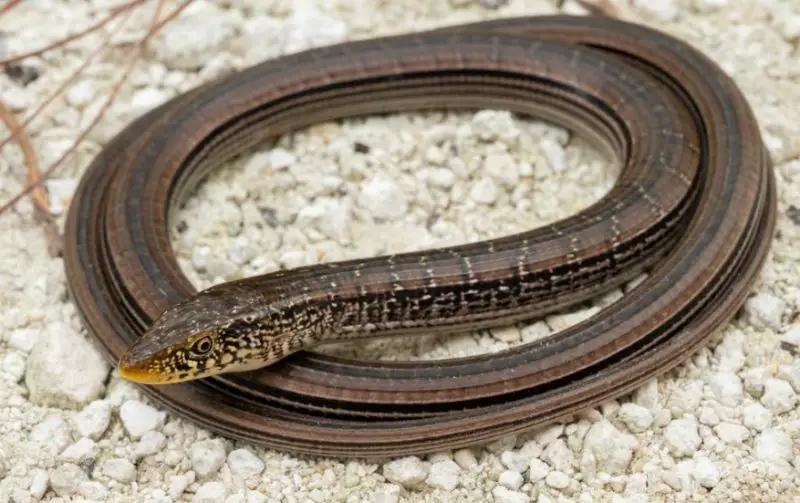
The Slender Glass Lizard is a legless lizard resembling a snake but distinguishable by the presence of eyelids and external ear openings. It has a slender, elongated body covered with smooth scales and typically exhibits a light brown or gray coloration with darker lateral stripes.
Adults commonly reach lengths of 20 to 28 inches, with a long, fragile tail that can break off easily as a defense mechanism. Their slim build allows them to maneuver quickly through grass and leaf litter.
Behaviorally, these lizards are secretive and primarily terrestrial, often hiding under logs, rocks, or dense vegetation. They are diurnal hunters feeding on insects, spiders, small rodents, and occasionally other small reptiles.
In South Carolina, the Slender Glass Lizard inhabits open woodlands, pine forests, and grassy fields with loose, sandy soils that facilitate burrowing and hiding. They prefer habitats with abundant ground cover and ample prey availability.
Great Plains Skink (Plestiodon obsoletus)

The Great Plains Skink is a large, robust lizard characterized by its broad head and smooth, shiny scales that range in color from tan to olive, with darker blotches along the back and sides. This species is more commonly found westward but occasionally occurs in South Carolina’s westernmost regions.
Adults can grow up to 13 to 16 inches in length, including a long, tapering tail. They have strong limbs and claws suitable for digging and climbing.
Great Plains Skinks are diurnal and mostly terrestrial, spending time basking on rocks or logs. They feed on a wide variety of insects, spiders, small mammals, and other reptiles. Males are territorial during breeding season and display push-up behaviors.
Their preferred habitats include open woodlands, grasslands, and rocky outcrops with loose soil, providing shelter and abundant prey.
Great Plains Narrow-headed Skink (Plestiodon septentrionalis)
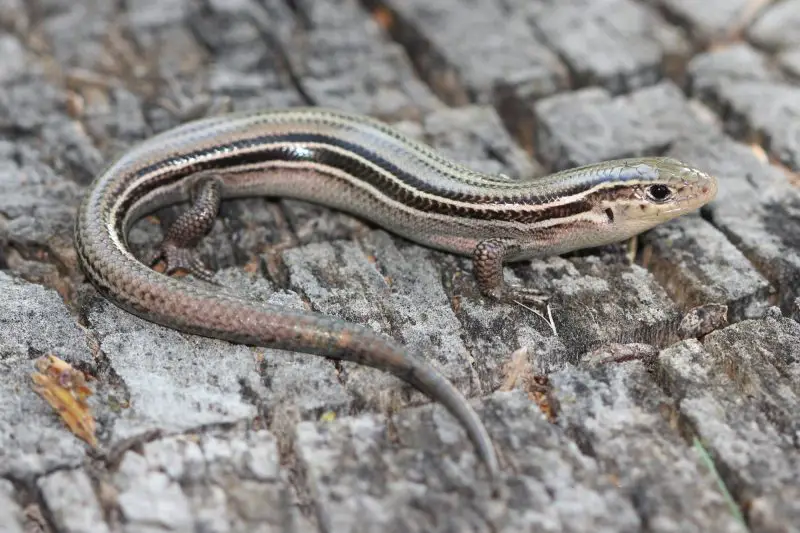
The Great Plains Narrow-headed Skink is a smaller relative of the Great Plains Skink, noted for its more slender head and elongated body with smooth scales. It exhibits a grayish to brown coloration with faint striping or spotting.
Adults measure approximately 6 to 9 inches long, with long tails aiding in balance and agility. This skink is agile and quick, adapted for navigating leaf litter and rocky terrain.
Behaviorally, it is a diurnal insectivore, feeding on a variety of insects and small invertebrates. It prefers moist, well-vegetated habitats and uses logs, rocks, and debris for shelter.
In South Carolina, this species is rare and found in limited upland or rocky forest areas, favoring cooler microhabitats with good ground cover.
Mediterranean Gecko (Hemidactylus turcicus)
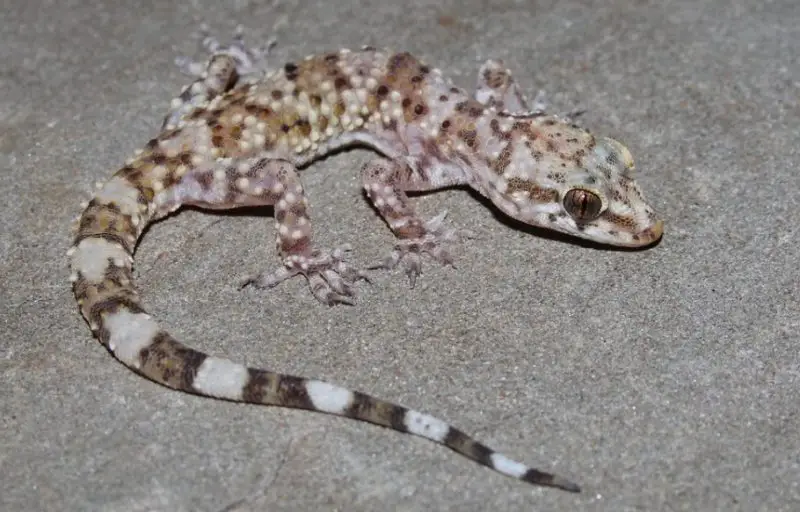
The Mediterranean Gecko is a small, nocturnal gecko notable for its translucent skin, large eyes, and adhesive toe pads that allow it to climb vertical and smooth surfaces, including walls and ceilings. Its coloration is typically pale gray or tan with darker spots, providing camouflage in urban environments.
Adults measure about 3 to 5 inches in length, with a soft, slightly wrinkled appearance. They can autotomize their tails to escape predators, regenerating them over time. Their toe pads have microscopic hairs that provide remarkable climbing ability.
Behaviorally, Mediterranean Geckos are active at night and often found near human dwellings, where they prey on insects attracted to artificial lights. They communicate with soft chirps and clicks.
In South Carolina, they thrive in warm urban and suburban areas, often seen on exterior walls, fences, and inside buildings, contributing to insect control in human habitats.
Common Five-lined Skink Variant (Plestiodon fasciatus hybrids and subspecies)
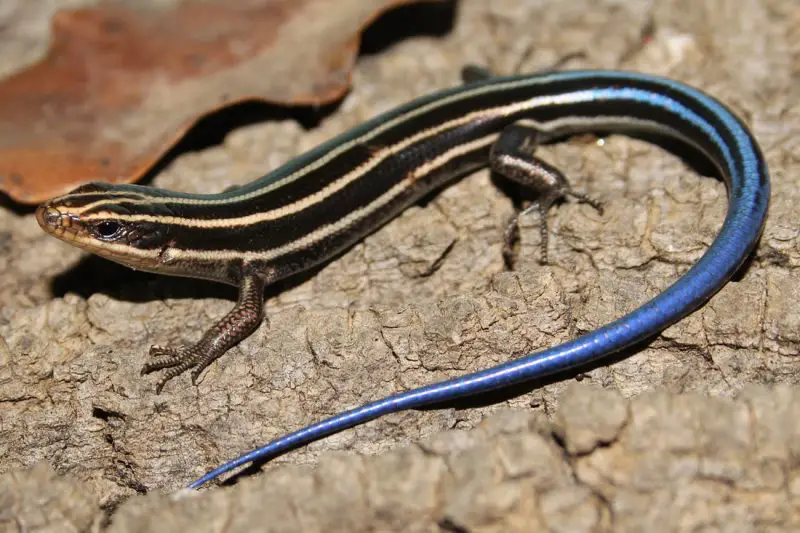
Within South Carolina, variations and subspecies of the Common Five-lined Skink exist, showing slight differences in coloration, stripe patterns, and size. Hybrid zones occur where ranges overlap with related skink species, adding genetic diversity.
These skinks maintain similar size ranges (5 to 7 inches) and behaviors to the typical Common Five-lined Skink. They are diurnal, territorial during mating seasons, and insectivorous.
Their adaptability allows them to occupy a variety of habitats including hardwood forests, mixed woodlands, rocky slopes, and suburban gardens.
The presence of these variants reflects the ecological complexity and ongoing evolutionary processes in the region’s lizard populations.
Northern Fence Lizard (Sceloporus occidentalis)
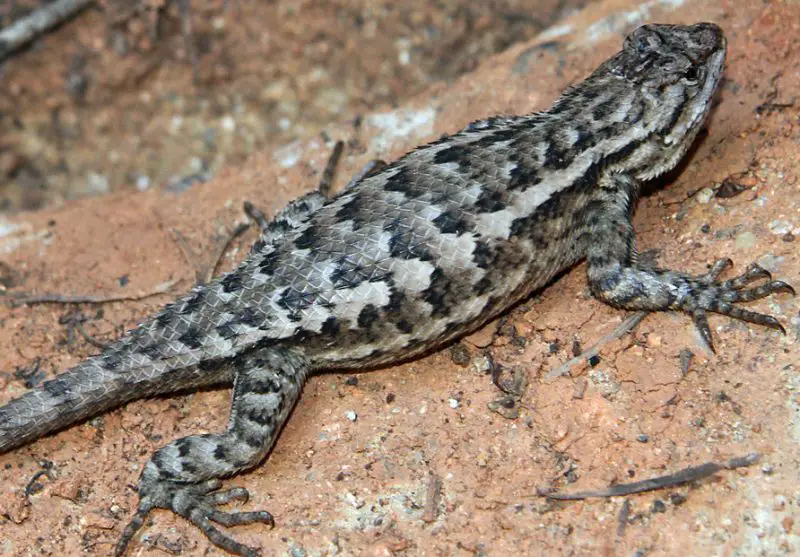
The Northern Fence Lizard is a close relative of the Eastern Fence Lizard but distinguished by slightly different scale texture and coloration. It has rough, keeled scales and a mottled gray-brown body with darker crossbands. Males display bright blue patches on the throat and belly, especially during the breeding season.
Adults measure about 5 to 7 inches in length. They have strong limbs and flattened bodies adapted for climbing and basking on rocks, fences, and tree trunks. Their robust build helps them navigate rugged terrain.
Behaviorally, these lizards are diurnal and territorial. Males perform push-ups and head-bobbing displays to establish dominance and attract females. They feed mainly on insects such as ants, beetles, and spiders.
In South Carolina, Northern Fence Lizards inhabit rocky outcrops, open woodlands, and forest edges. They prefer sunny areas with ample cover for hiding from predators.
Broad-headed Skink Variant (Plestiodon laticeps regional populations)
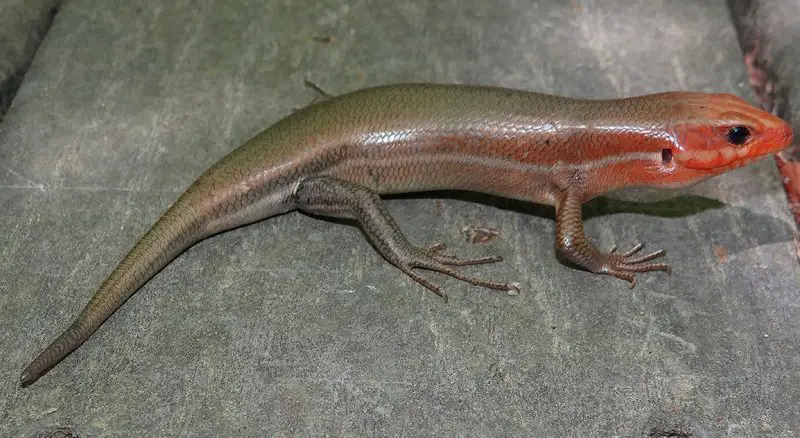
Regional populations of Broad-headed Skinks in South Carolina may show slight variations in coloration and size, reflecting local environmental adaptations. Males often exhibit the characteristic bright orange or red heads during mating season.
These skinks can grow up to 14 inches long and have strong climbing abilities, spending time both on the ground and in trees. Their shiny scales help with camouflage in wooded environments.
Their behavior includes territoriality during breeding, with males displaying aggressively to rivals. Their diet is diverse, including insects, spiders, amphibians, and occasionally small reptiles.
They prefer mature forests and areas with abundant leaf litter and fallen logs, which provide shelter and foraging grounds.
Carolina Anole (Anolis carolinensis subspecies)

The Carolina Anole is a subspecies of the Eastern Green Anole, exhibiting slight morphological differences adapted to local microhabitats in South Carolina. It maintains the bright green to brown color-changing ability and the male’s pink dewlap.
Adults are similar in size to the main species, about 5 to 8 inches long, slender and agile, well-adapted for climbing and hunting insects.
Behaviorally, Carolina Anoles are territorial and perform typical anole displays such as head-bobbing and dewlap extension. They thrive in warm, humid environments and are often found in forests, gardens, and urban areas.
Their diet mainly consists of small insects and spiders, and they play an important role in controlling pest populations.
Coastal Plain Fence Lizard (Sceloporus undulatus hyacinthinus)
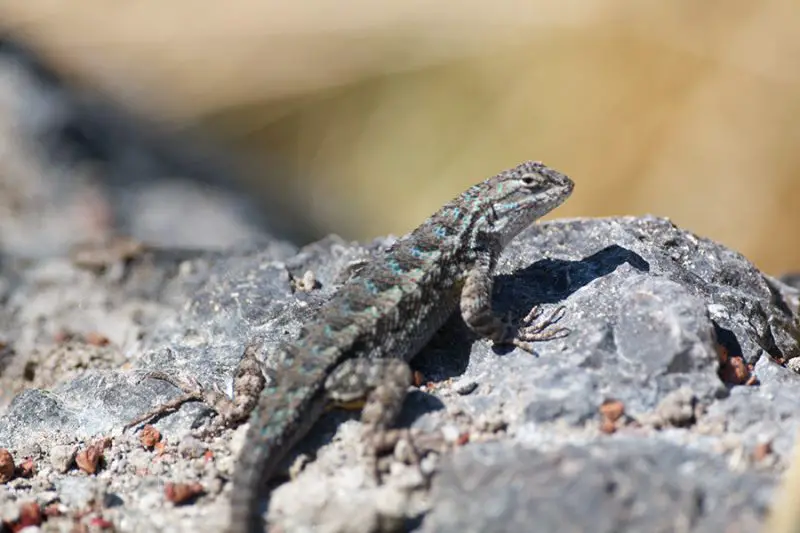
The Coastal Plain Fence Lizard is a subspecies of the Eastern Fence Lizard adapted to the warmer, coastal habitats of South Carolina. It features a similar rough, spiny-scaled body with gray or brown coloration and distinct blue patches on males.
Adults are about 5 to 7 inches long, with strong limbs and a flattened body suited for climbing and basking on rocks and tree trunks.
They are diurnal and territorial, displaying push-ups and throat patch displays during breeding season. Their diet includes ants, beetles, spiders, and other arthropods.
They inhabit sandy pine forests, scrublands, and rocky outcrops in coastal regions, preferring sunny areas with ample hiding spots.
FAQs about Lizards in South Carolina
What types of lizards are common in South Carolina?
South Carolina is home to a variety of lizard species including the Eastern Green Anole, Brown Anole, Eastern Fence Lizard, several species of skinks like the Broad-headed Skink, and legless lizards such as the Eastern Glass Lizard. These lizards inhabit forests, urban areas, coastal plains, and scrublands.
Are any lizards in South Carolina dangerous to humans?
No, the lizards native to South Carolina are generally harmless to humans. They are non-venomous and tend to avoid contact. Their primary defense mechanisms are fleeing or tail autotomy (dropping their tail) rather than aggression.
How can I identify an Eastern Green Anole?
Eastern Green Anoles are slender lizards with bright green coloration, although they can change to brown. Males have a noticeable pink dewlap under their throat, which they display during territorial or mating behaviors. They have sticky toe pads for climbing.
Do lizards in South Carolina pose any ecological benefits?
Yes, lizards help control insect populations by preying on flies, ants, spiders, and other small arthropods. They play an important role in maintaining the balance in local ecosystems and can reduce pests in gardens and farms.
Where do lizards typically hide or take shelter?
Lizards often seek shelter under logs, rocks, leaf litter, and dense vegetation. Some species, like the Mediterranean Gecko, may also inhabit human structures such as walls, fences, and buildings, especially in urban areas.


